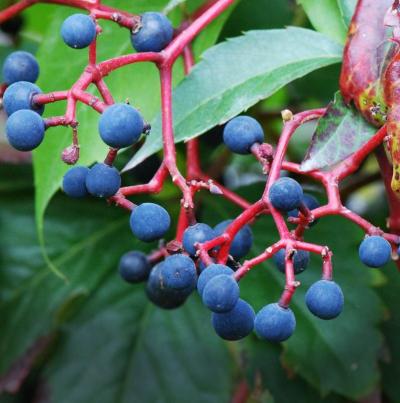For the birds: A guide to fall berries
Story Location
United States
Ever wonder if those shiny berries that spring up everywhere in the fall are edible?
Although humans are better off sticking to traditional autumn treats like apples, squash, and pumpkin spiced lattes, many birds feed on native berries during their flight south for the winter.
According to Dartmouth Natural Resources Trust, fall fruiting shrubs are important in coastal areas because birds that migrate along the east coast “flyway” need a place to pull over, rest, and refuel.
DNRT has released a short guide to native autumn berries found right here in Dartmouth that help feed the birds along their southward trek.

Pokeweed
American pokeweed thrives in open or edge habitats, especially those where birds are able to roost. It can be found at forest edge, in fence rows, under power lines, pastures, old fields, and similar areas. It is sometimes a garden or yard weed.
The berries are poisonous to humans, but according to DNRT, many different types of birds love them.

Northern Bayberry
According to the USDA, the highly scented bayberry fruit was a source of wax for early settlers in America and is still used in candle making.
Because some leaves remain on the plant throughout most of the winter months, it provides year-round shelter for game and non-game animals alike.
A USDA plant fact sheet notes that the berries provide a key energy source for swallows migrating south along the mid-Atlantic coast. Although edible for humans, the berries’ waxy coating makes the leaves preferable for consumption as a flavoring.

Arrowwood Viburnum
This multi-stemmed, rounded shrub provides food, cover, and nesting sites for birds, and larval food for butterflies and moths.
Its dark blue berries attract a plethora of birds including cardinals, bluebirds, and robins, and are non-toxic to humans and dogs.

Red-osier Dogwood
Red-osier Dogwood will often bloom into late fall, so both flowers and its blue-white berries are visible when the leaves turn yellow or maroon.
The plant was also one of several used by American Indians as a tobacco substitute, according to the USDA. The agency notes on its website that edible plant enthusiast H.D. Harrington characterized red-osier dogwood as “aromatic and pungent, giving a narcotic effect approaching stupefaction.”

Virginia Creeper
A member of the grape family, the berries of Virginia Creeper are highly toxic and can be fatal if ingested, according to the USDA. Sap from stems and leaves can also irritate human skin.
A USDA plant fact sheet states that songbirds are the primary consumers of the fruit, but that deer, gamebirds and small mammals will also feed on them.
Virginia Creeper can be found in forests and forest margins and its thick foliage provides great cover for small animals.































